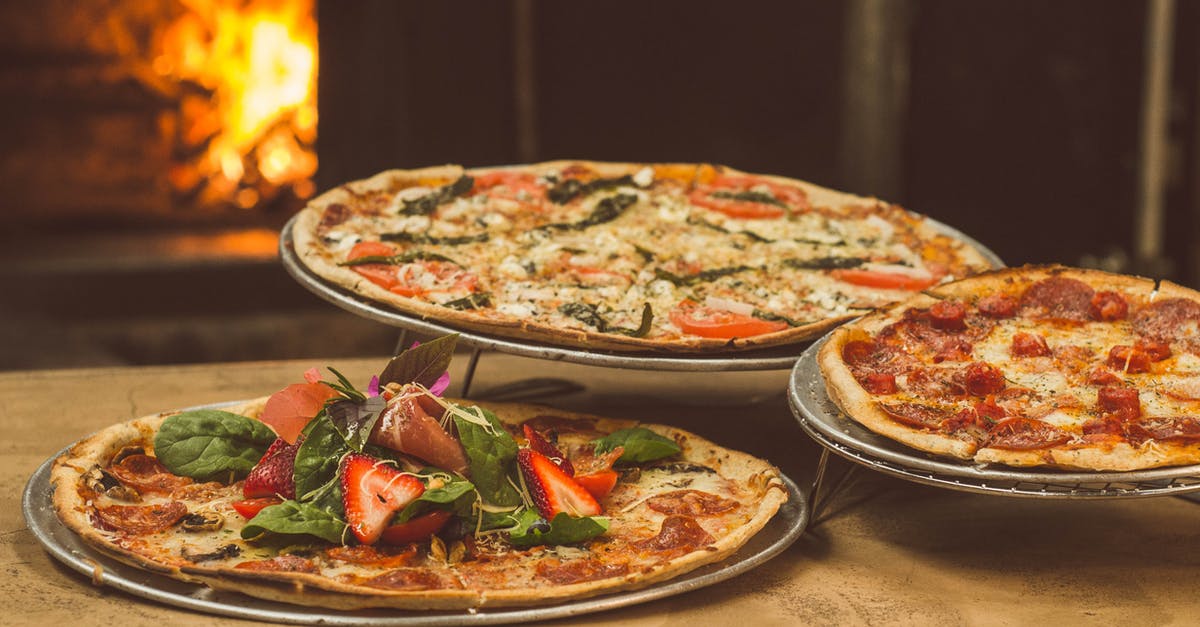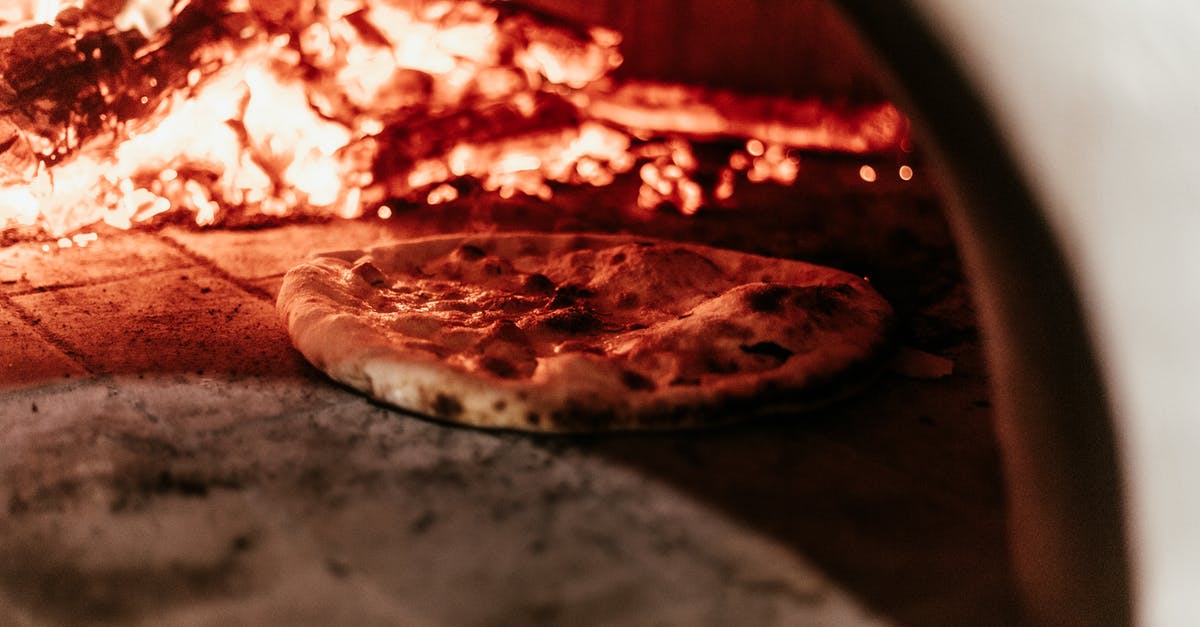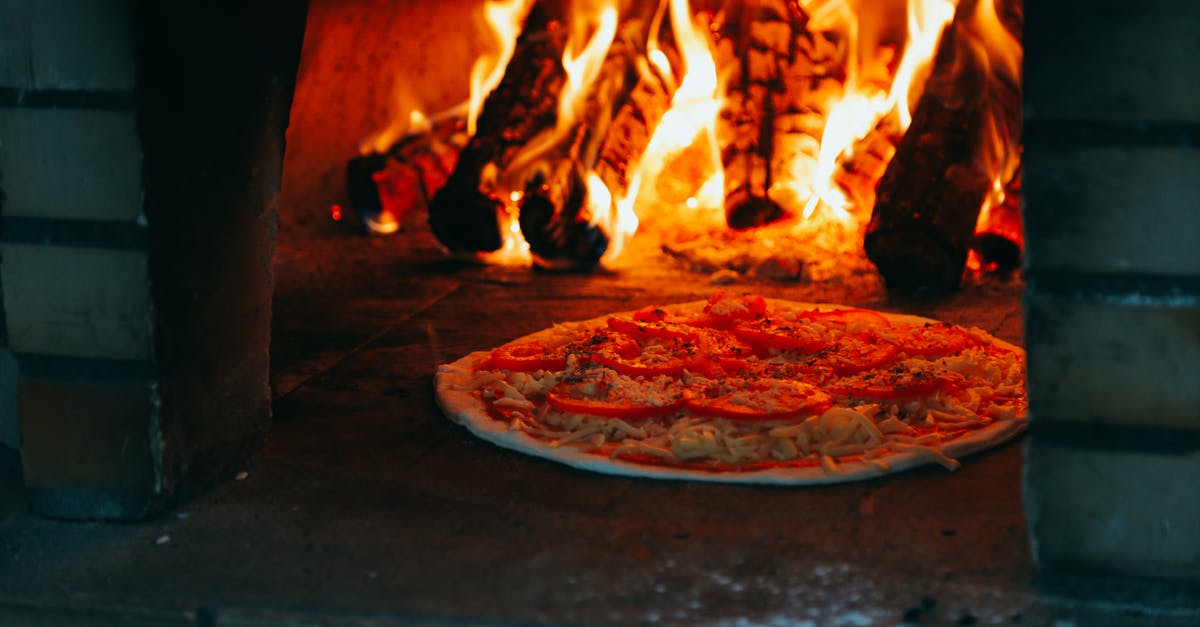Is there a significant difference between pizza ovens and conventional ovens with pizza functionality?

I have a small pizza oven (the round ones, with stone), with whom I make an adequate pizza; according to the manuals, temperatures go from 190 to 400 °C, so I guess I'm baking it between 300 and 350 °C.
Since I have to buy a new oven, I've seen that some ovens have a pizza specific functionality (I guess it's more of a "crisp" one), with whom one bakes the pizza at 275 °C in the lowest rack; I guess I could use a stone for better results.
I was wondering - is there a significant difference, when making pizza, between the two? More in general, is there a significant difference between 275/300/350 °C when baking pizza?
Best Answer
The linked question in comments makes some general points about dedicated pizza ovens.
However, to address the final question about temperature differences, the general answer is that it depends on the style of pizza you'd prefer to make and the dough/topping characteristics. Some doughs and pizza styles are designed to be cooked at lower temperatures for longer times. If you like thick-crust or "deep dish" style pizzas, an oven that is too hot can burn the crust and/or toppings before the pizza is fully baked.
Assuming that you intend to bake thin-crust pizza, generally the hotter the oven, the better the results. Traditional Neapolitan pizza has official regulations requiring a minimum cooking surface temperature of 430°C, with an oven temperature at a minimum of 485°C. (Note the Fahrenheit conversion temps are swapped in the document from what they should be.) They are also required to have a bake time less than 90 seconds.
It's doubtful that one could achieve that in a traditional home oven or even most dedicated pizza ovens for home use. There are lots of minor changes that happen with such fast cooking, such as the slight charring patterns on the bottom of the crust and on the edges, more significant oven spring, more rapid drying of the dough which alters the texture, etc. However, by varying the dough composition (type of flour, other added ingredients besides yeast, salt, and water, such as oil/fat or sugar), one can create other styles of pizza that have some characteristics baked at lower temperatures. Some people, for example, like to put a little sugar and oil into their crusts to change texture and flavor -- baking those pizzas at 500°C would likely produce excessive browning and charring.
A final thing to note is that temperature is often not as important as heat transfer rate in achieving pizza results. Many people recommend making pizza on a preheated stone to increase the heat transfer rate. However, in a home oven with a maximum temperature of 250-285°C or so, there's only so much you can do to raise the temperature of your cooking surface.
On the other hand, you can increase the rate of heat transfer into your pizza by doing things like (1) using a large thick hunk of steel to bake your pizza on (which can transfer heat much more quickly than a stone) and (2) turning on the broiler after the oven has hit its maximum temperature, which will increase radiant heat transferred into the top of the pizza (beyond that conveyed from the air in the oven). The combination of maximized heat transfer on the top and the bottom of a pizza can bake the pizza a lot more quickly and achieve results that would normally require a much hotter oven. It won't quite get you to Neapolitan-style pizza in a home oven, but it can get significantly closer.
(I can bake a pizza in roughly 3 to 4 minutes in my home oven using these techniques, a lot longer than 90 seconds, but significantly less than the 8-10 minutes or longer most people take with standard stones. But the major noticeable differences aren't the cook time -- but rather significantly increased oven spring, better texture, and better browning.)
Pictures about "Is there a significant difference between pizza ovens and conventional ovens with pizza functionality?"



Quick Answer about "Is there a significant difference between pizza ovens and conventional ovens with pizza functionality?"
Pizza oven vs regular oven main differences: Much higher temperatures at 900F/500C vs 500F/260C – this cooks the pizza in around 90 seconds to give a number of benefits. The texture far superior. There is a crisp crust but with a moist interior.How is a pizza oven different from a regular oven?
While a pizza shop can heat their ovens to 700 to 800 degrees Fahrenheit, most conventional home ovens max out at around 500 degrees. At that heat, it takes between 20 and 30 minutes to preheat the oven, plus eight to 15 minutes to bake a pizza.Are conventional ovens good for pizza?
Foods like pizzas, pies, cookies, and bread all cook very well with convection settings. On the other hand, those that are more delicate and need time to slowly rise and stay fluffy and moist are typically not as good to cook in a convection oven. This is because it could affect the rise of the dough.Is convection or conventional better for pizza?
Moving air from the fans of the convection oven transfer heat to the pizza better than stationery air.Which oven function is best for pizza?
Generally, the hotter the oven, the better the pizza will be. The best oven temperature for pizza is between 450 and 500 degrees F (250 to 260 degrees C). Pizza ovens cook at temperatures between 800 and 900 degrees F. You can't get that hot in your home oven, but the higher you can go, the better.Convection vs. conventional ovens explained
More answers regarding is there a significant difference between pizza ovens and conventional ovens with pizza functionality?
Answer 2
The best pizza is cooked hot and fast. It's what gives you nice browned cheese and crispy crust without turning the whole thing into either some gooey undercooked mess, or overcooked throughout into cardboard.
You want the heat to reach the center of the pizza layers just enough while toasting the outer layers top and bottom.
A preheated pizza stone helps transfer heat to the crust, which is nice but if it's not hot enough it impedes the toasting.
Sources: Stack Exchange - This article follows the attribution requirements of Stack Exchange and is licensed under CC BY-SA 3.0.
Images: Narda Yescas, Arthur Brognoli, André Beltrame, Katerina Holmes
